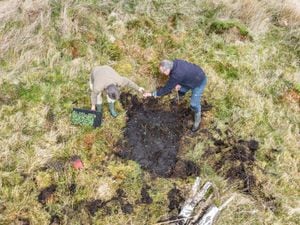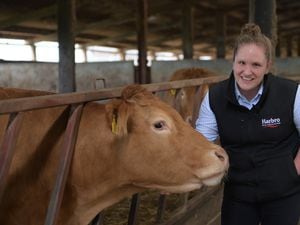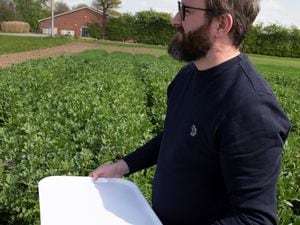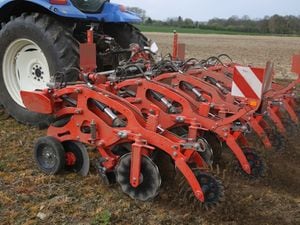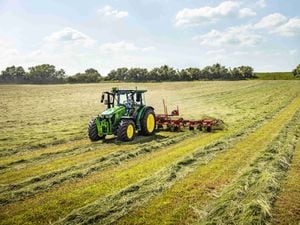If you can’t measure it, you can’t manage it says sheep farmer Sam
Sam Jones, who runs a large flock of ewes near Redditch in Worcestershire, was one of the three finalists in the 2017 Farmers Weekly Sheep Farmer of the Year Award and is one of the two farmers who will be visited during the 2018 Malvern-based National Sheep Association event.
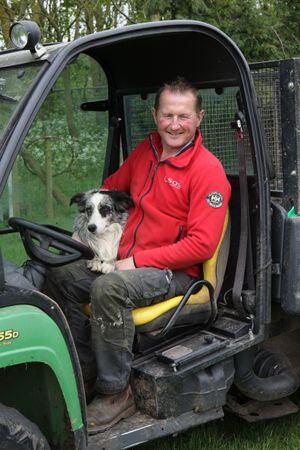
Sam farms Brook House Farm in partnership with his parents David and Wendy. The 150acre farm was purchased in 1938 by his grandfather, who milked a few cows and had a milk round. Over the years the farm has been expanded to 500acres all within a ring fence. In the 90s the farm was producing cereals and in calf heifers, some of which were exported, but BSE put a stop to that and that’s when sheep numbers began to increase.
Sam is a great advocate of the old adage if you can’t measure it, you can’t manage it and is a great believer that if a job is worth doing it’s worth doing well.
As a result the management is geared to recording and data collection as the basis for decision making and he is at the forefront of making use of innovations and labour saving devices and cost cutting technologies, as the work has to be done by himself, his father, who still plays a very active role in the everyday farm jobs as well as helping with the sheep and a part-time worker two days a week.
With the help of Rural Development and Leader grants, a Prattley automated sheep weighing, recording and shedding system, with an Electrodip Jetter at the end of the race has been installed. Sam says “It saves time by not having to treat individual animals and saves on chemical costs.” With the undercover sheep handling layout with its sophisticated race, he says “as it is so easy to do, we weigh ewes and lambs on a very regular basis, some times weekly, throughout the year”, enabling them to monitor ewe condition and weights and lamb growth rates and make any adjustments as necessary.
Until a few years ago, partly in response the headage payment, they were running 2000 North Country or Dales-bred ewes, but latterly the flock has been reduced to 1200, which has simplified its management, increased lamb numbers sold per ewe, saved costs and increased profitability per ewe mated. The replacements are purchased as ewe lambs from markets in North Yorkshire. The replacements are isolated on arrival and kept separate from the main flock for the first year and as they are tupped in their first season on the farm they are given special treatment to allow them to increase in size to make sure they grow while in lamb and rearing lambs.
As they employ vet students at lambing, the ewes are tupped so lambing coincides with the Easter university holiday. To make sure the lambing period is as tight as possible, teaser rams are run with the ewes before they are tupped with Texel rams selected using EBV data. The ewes lamb inside, lambs tagged and recorded at birth and usually turned out 48hours later. Good biosecurity at lambing is regarded as essential; umbilical cords are treated at birth and twice again soon after with iodine and antibiotics are only used when essential in dealing with specific problems. Triplet lambs are fostered on to ewes with singles when-ever possible and others are raised using two Volac milk dispensers.
During the grazing season as a way of reducing the use of wormers and risking building up a resistance to them, dung samples are regularly collected from the fields, partly processed before being despatched to FECPAK for worm counts and dosing is only done when results show a problem. Working with AHDB’s challenge sheep programme these year’s ewe lambs and their lambs are being monitored for weight and productivity over the next 7 years with will give us a greater understanding in a ewes life cycle.
The wether lambs are sold from July through to December at 45kgs direct to Farmers Fresh, the farmer owned slaughter and processing cooperative.
There are 250 acres of permanent pasture, with some being renovated by stitching in new seed, plus 150 acres of mainly long clover based leys, although some Westerwold ryegrass is sometimes included. The farm grows 80 acres of winter wheat, grown for sale, 20 acres of barley, 20 acres of oats and 20 acres of beans which are all fed to the sheep.
All the land has been zoned, linked to soil variability by SoilQuest, with Pand K levels being checked every three years and fertiliser applied with a KRM variable rate spreader. Around 75kgs of a nitrogen/sulphur mix is applied during the season, some early and then explained Sam, “a little at a time.”
All the arable and grassland work, including mowing, round bale silage making and wrapping is done using their own equipment and tractors, which are fitted with GPS and auto steer, which Sam says increases work output.
There is an array of 50kw solar panels on the buildings with the surplus electricity exported to the grid and a woodchip boiler heats the buildings and used to dry the corn and some hay on ventilated floors.
The Sheep Event takes place on Wednesday July 18 at Three Counties Showground, Malvern, Worcestershire with the farm tours the day before (Tuesday, July 17)

